It is important, when visiting historical museums and sites of historical significance, to think carefully about the context in which you visit that museum today. In so many ways it is easy to find similarities between ourselves and the depicted people of the past, and it is also crucial to examine the differences. It’s good that it is easy to relate to their struggles, but it is also necessary to examine ways in which their struggles would likely be compounded by other factors of the era.
These were the things I was thinking about when trying not to compare the very long, disorganized line I was in on my way to Ellis Island with the journey that millions of immigrants made to that same island at the turn of the twentieth century.
Between 1892 and 1954 nearly 12 million immigrants came to New York City by way of Ellis Island. They were running from poverty and pogroms, they had just spent several perilous weeks at sea, they were absolutely full to the brim with hopes for America, and the facilities on Ellis Island were their first stop along the way. In the 1950s, following the end of World War II, Ellis Island was closed and immigrants were thenon processed in a facility in lower Manhattan. The structure remained, however, and in the 1990s was refurbished and proudly opened as a museum and tribute to all who had walked through its doors and all those who continue to bring their hope with them to America today.
But back to me and my place in line for the ferry with no way to pass the time than to listen to an erhu(the Chinese string instrument pictured below) instrumentalist play, and I would not lie to you guys about this, Happy Birthday on repeat for the entire time that I was in line.
Prior to my arrival at the Battery Park departure point, I had thought that there would be two ferries, one going to the Statue of Liberty on Liberty Island and one going to Ellis Island. I soon learned that no, it is only one ferry service that makes a wide and lazy loop from Battery Park to Liberty Island and then to Ellis Island and back again, meaning that I had no choice but to wait in line with every tourist hoping to see New York City’s Big Green Lady on the first Saturday in May.
Eventually, I got through the line and boarded.
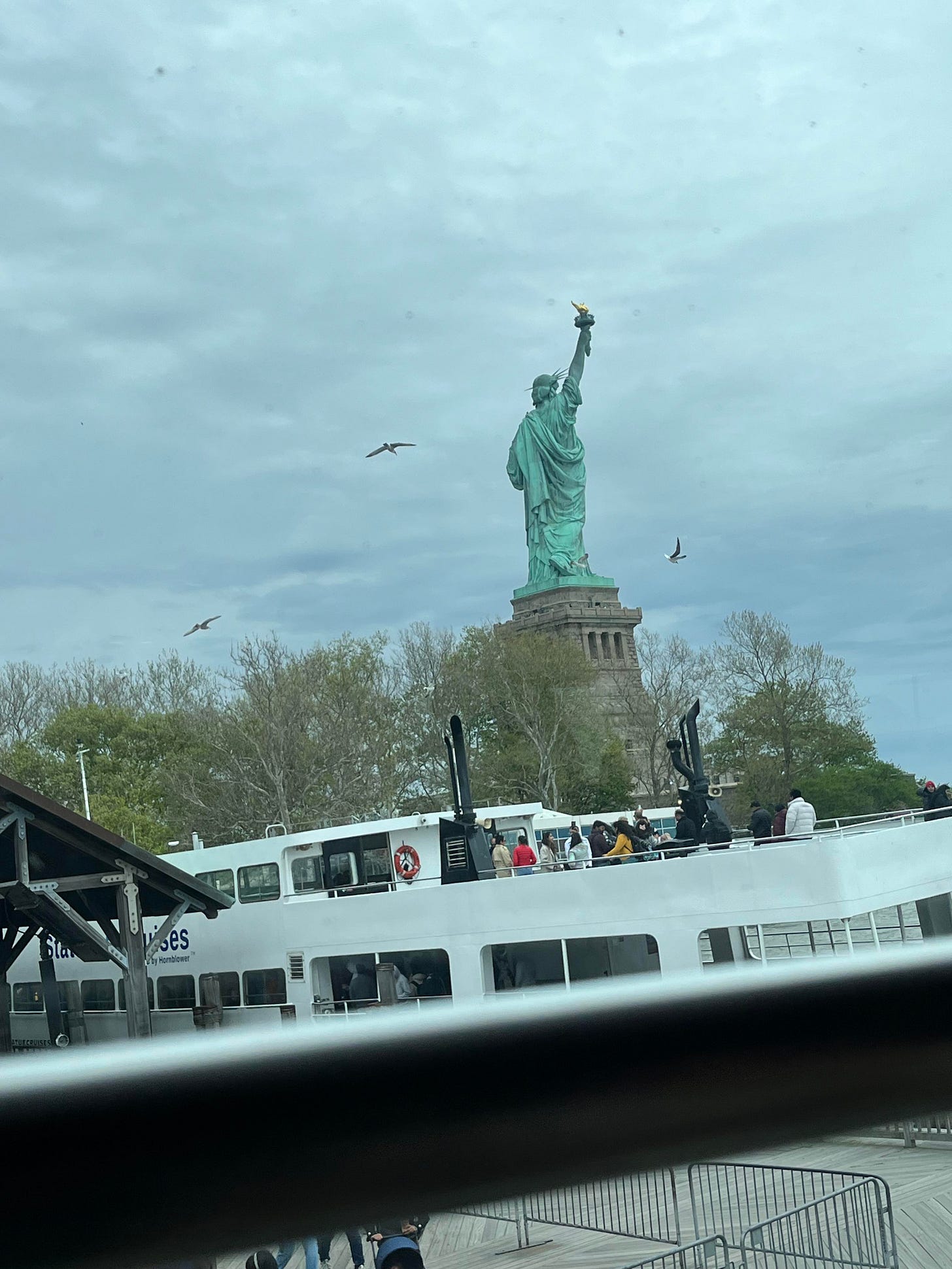
It’s clear to me that the Ellis Island National Museum of Immigration is really very cool. Even just at a glance, it’s a beautiful building and once I was inside all I wanted to do was explore all of the many halls that the many, many people had come through and learn all of the things that the people behind the museum had to teach me.
Unfortunately for me, I hadn’t planned my day very well. I had arrived at Battery Park at 1:30, and with the combined time to get a ticket, stand in line, go through security, and stop at Liberty Island it was 4:00. The museum closes at 4:45.
I basically only got to see one exhibit/hall which was on the peak years of immigration to Ellis Island, from 1895-1920. The lucky thing is that I liked it a lot and have much to say about it.
Things I Thought About While Looking At This Exhibit:
1. Photography
This exhibit was a purely factual account of the immigrants who came to America at the start of the twentieth century, aided by photos from an era when journalistic photographs had only just conceptually begun— and still I found myself continuously struck by the composition on these bad boys! The use of space in a frame! The understanding of portraiture! These are artistic images, and they’re legitimately very powerful!
2. Posters and Propaganda
While the photography of the era was a new and exciting art form all to its own, the early 20th century also had a fairly distinctive illustrative style, especially when it came to advertisements and propaganda.
3. Same as it ever was
Much has changed in the past one hundred years, and for better or for worse much has stayed the same. Hardships then are comparable to hardships now, as are small joys and commonplace occurances.
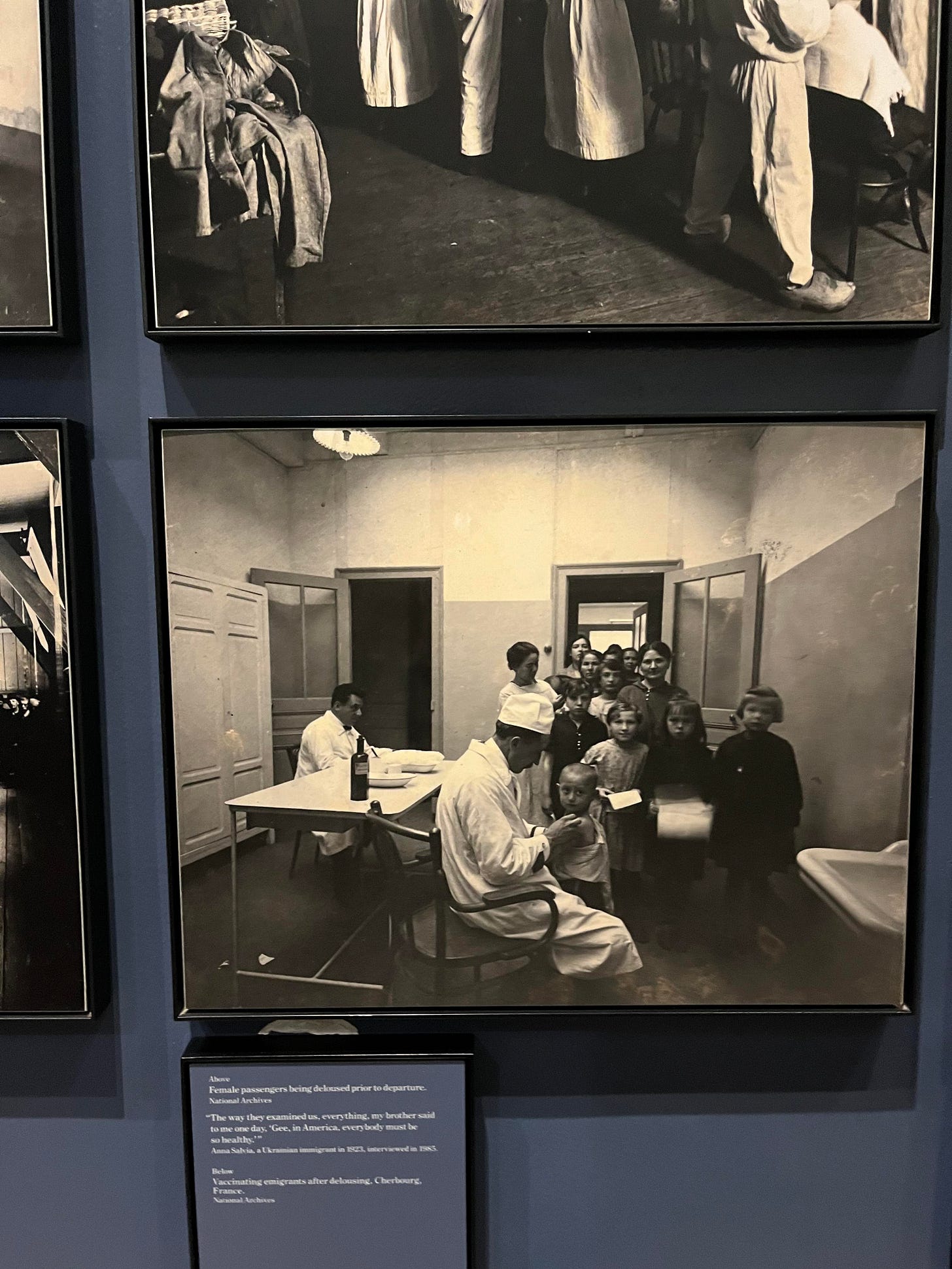
4. Ordinary Folks
When it comes to the historical museums and places, I find myself drawn much less to mythologized figures like the founding fathers and much more to the common people who were living their regular lives right alongside them. Even just a list of names of some of the people who were on board one ship on one day gives me a thrill. Who were they? Why were they coming to America? What lives did they lead when they got here?
Going to the Ellis Island National Museum of Immigration was a big and fascinating and ultimately very frustrating experience— just a small fraction of what arriving at New York through the Ellis Island Immigrant Processing Center was. I rode at the top of the ferry on my way back to Manhattan, and as I saw the buildings grow taller and taller as we approached I felt an overwhelming sense of relief. Finally, after all I’d seen and done that afternoon, I was going home.
Ellis Island National Museum of Immigration
ADMISSION: $25.00
GIFT SHOP: Yes
BATHROOM: Yes
WHEELCHAIR ACCESSIBLE: Yes
May 11: Fordham Museum of Greek, Etruscan and Roman Art
May 18: Fort Totten
May 25: Fort Wadsworth
June 1: Fotografiska

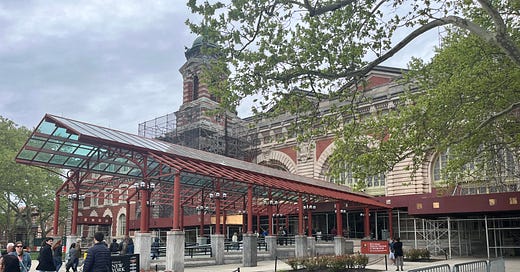


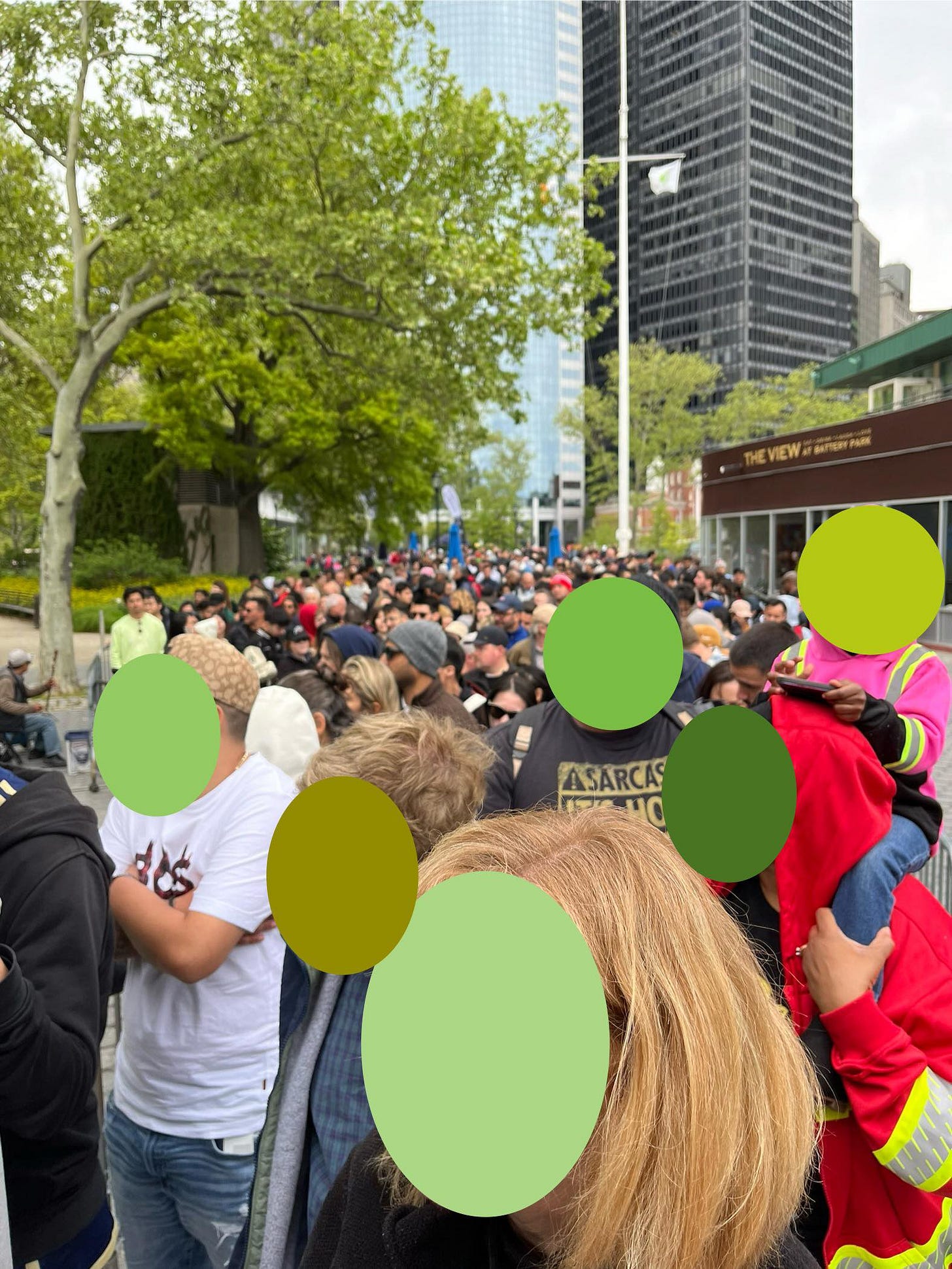

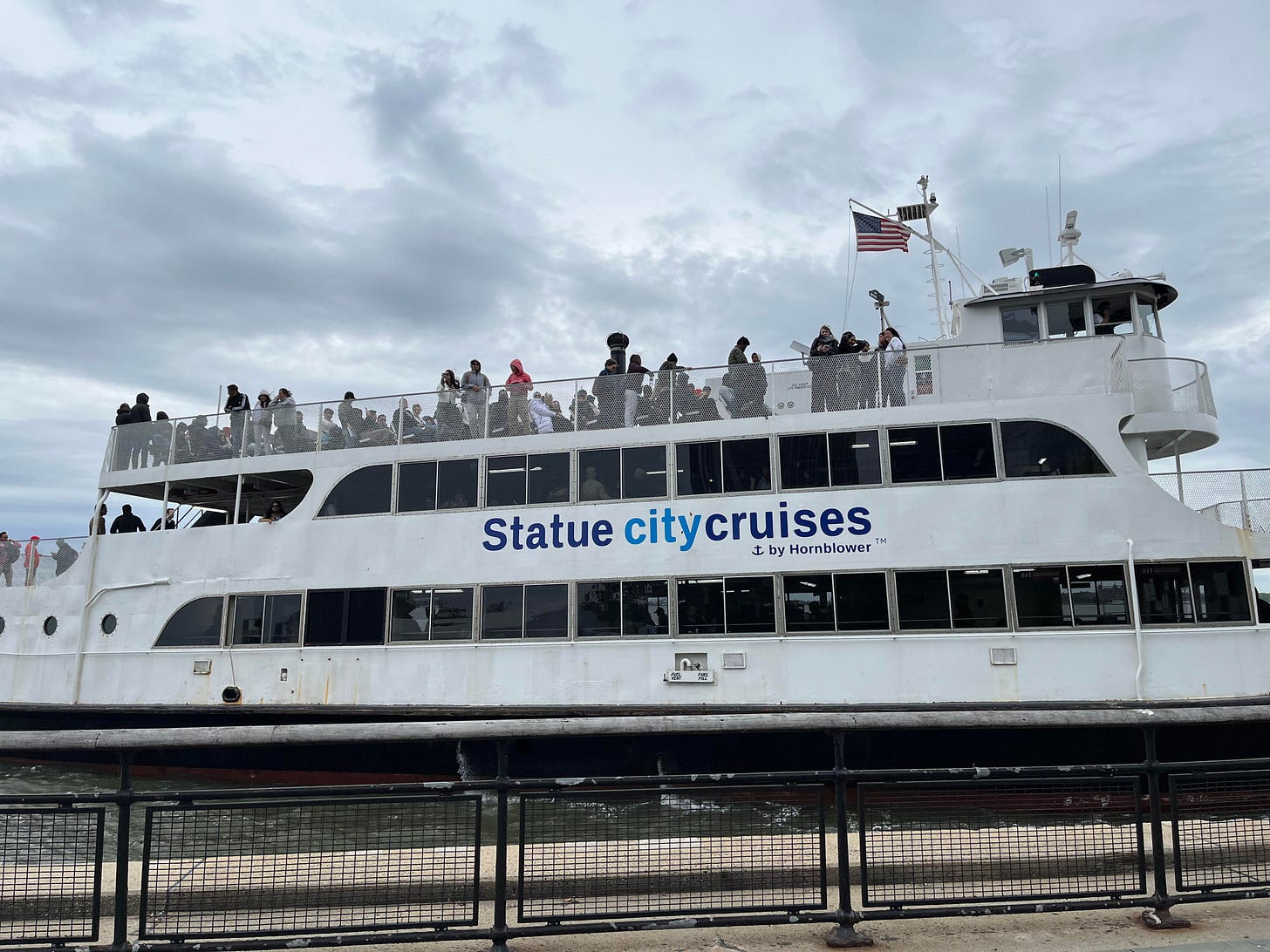

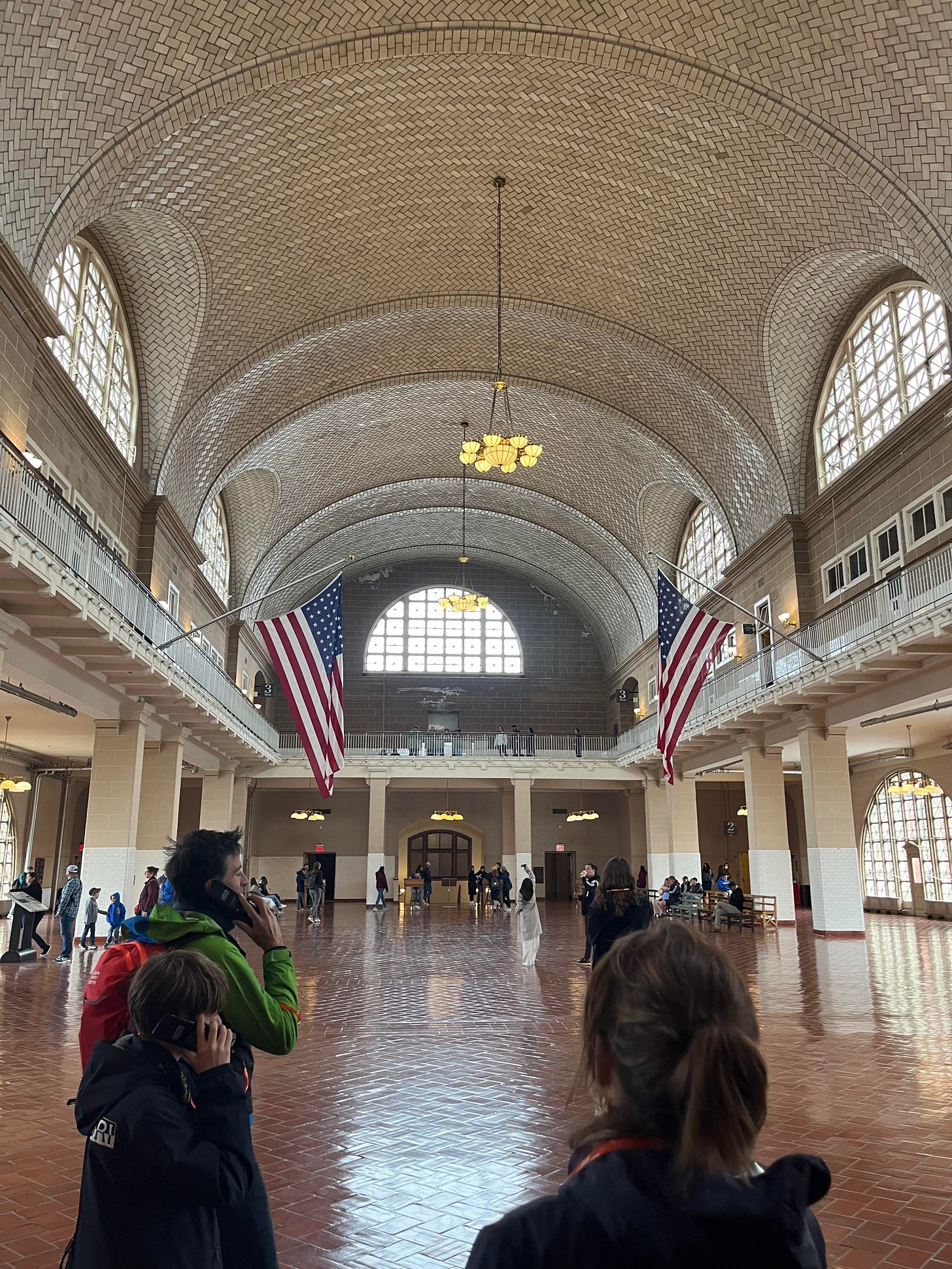
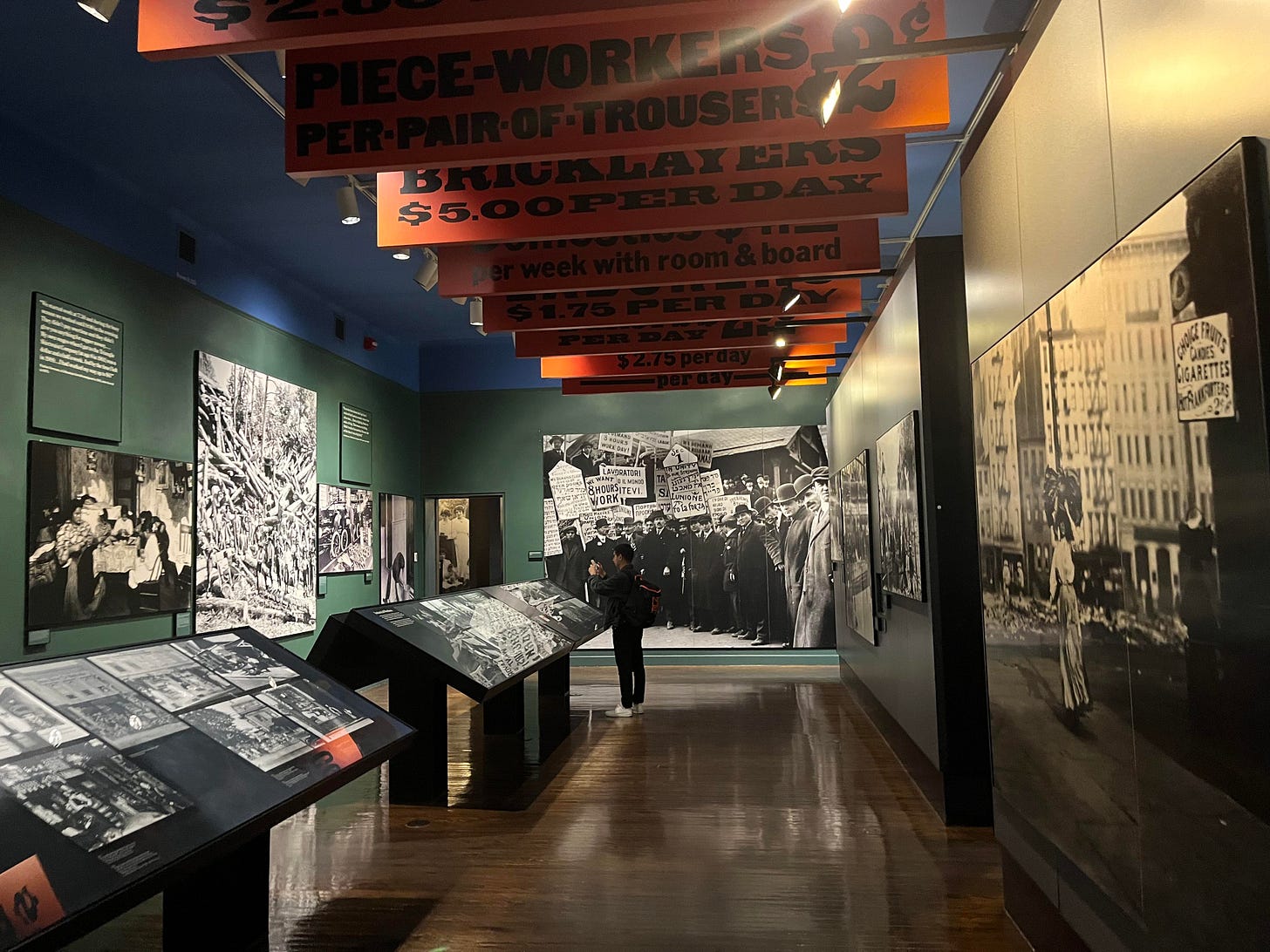
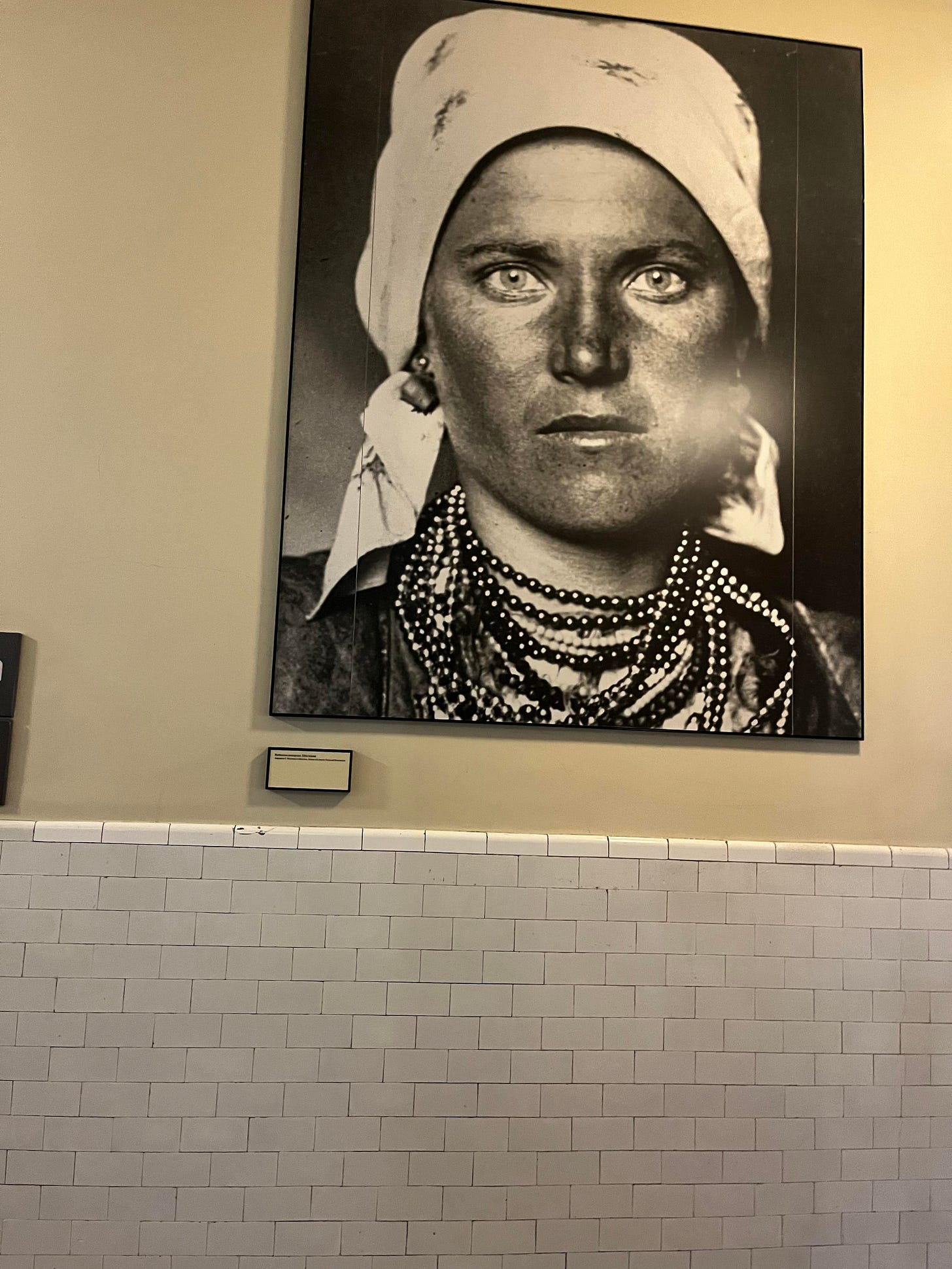
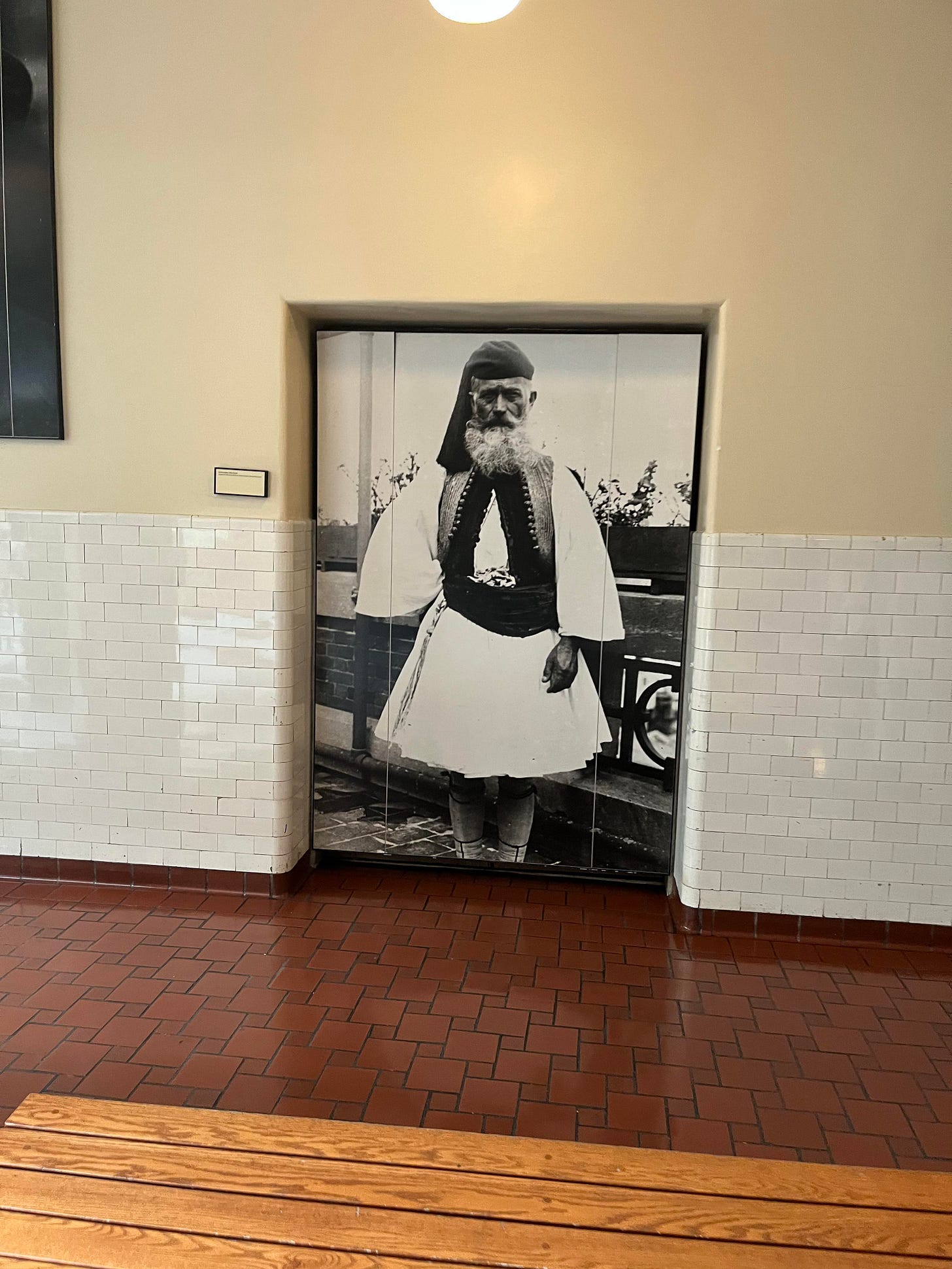
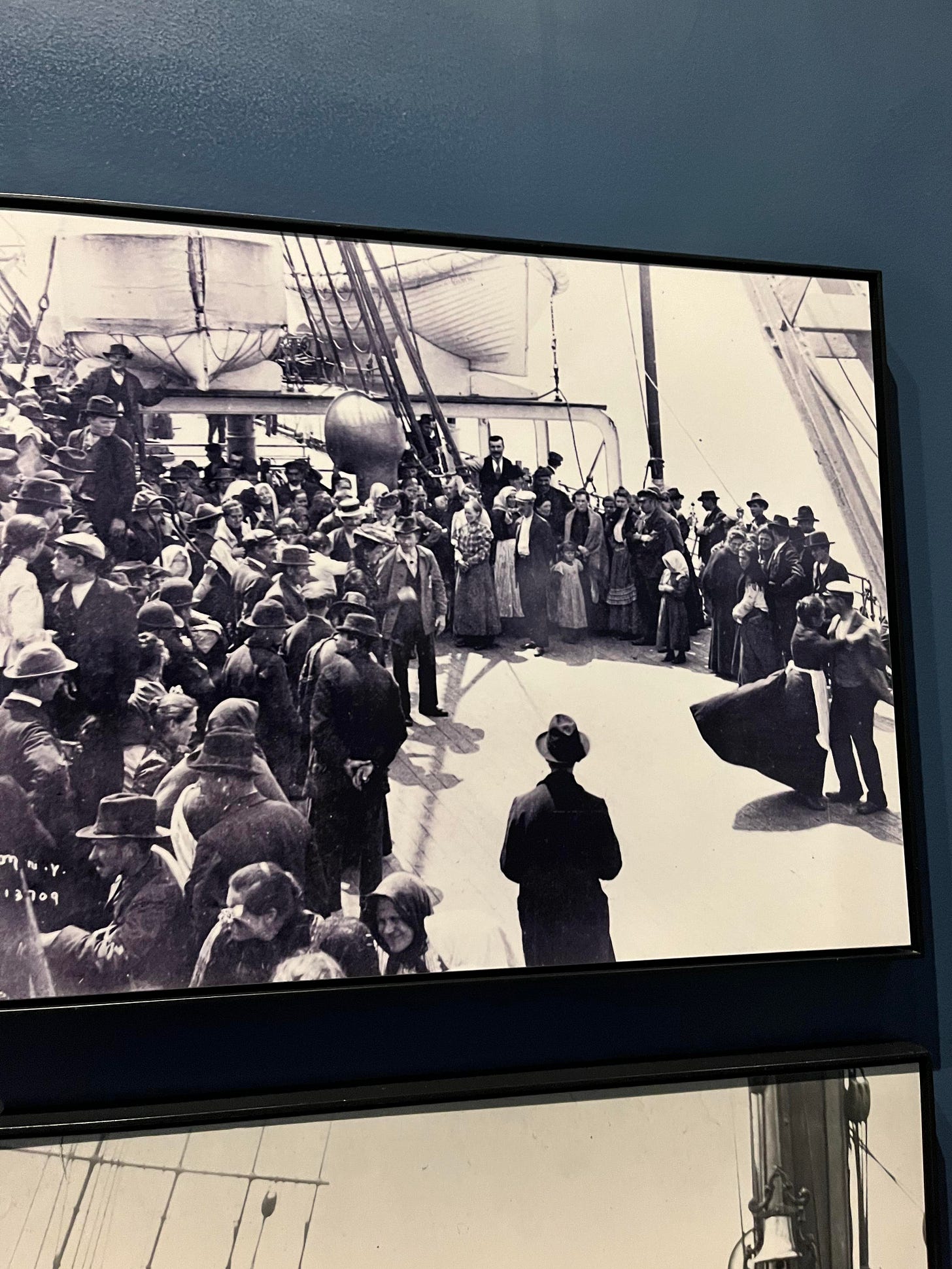
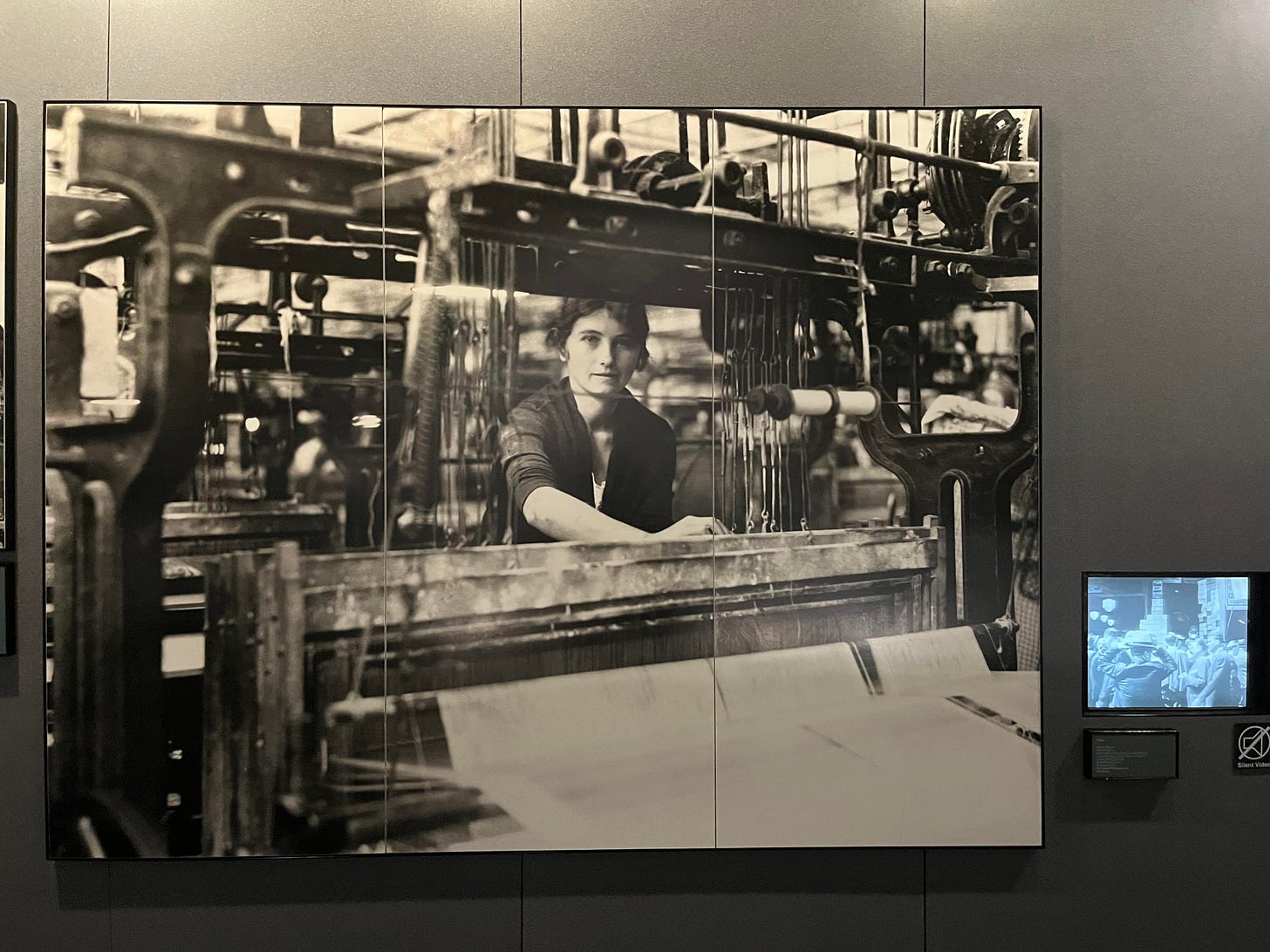
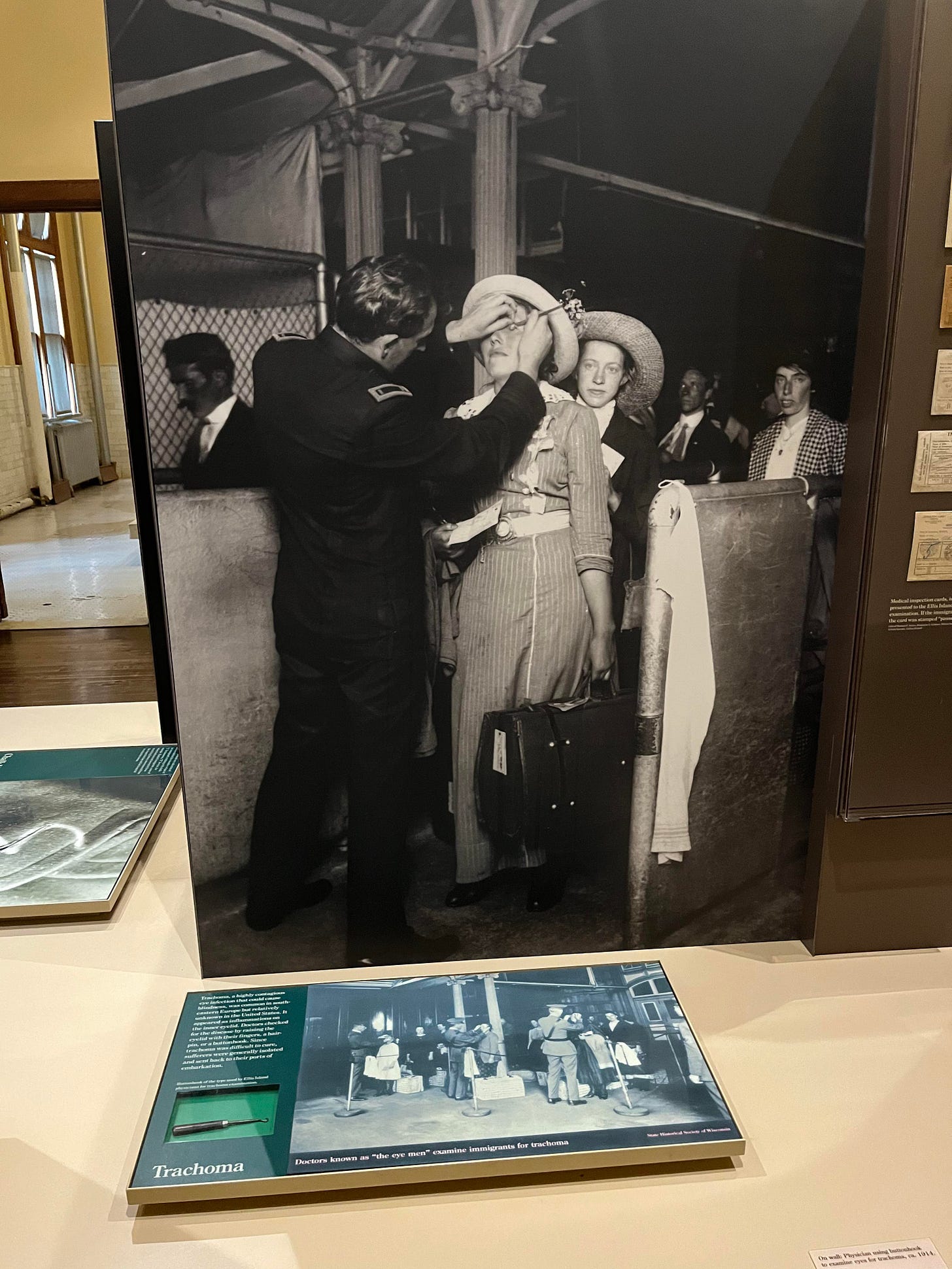
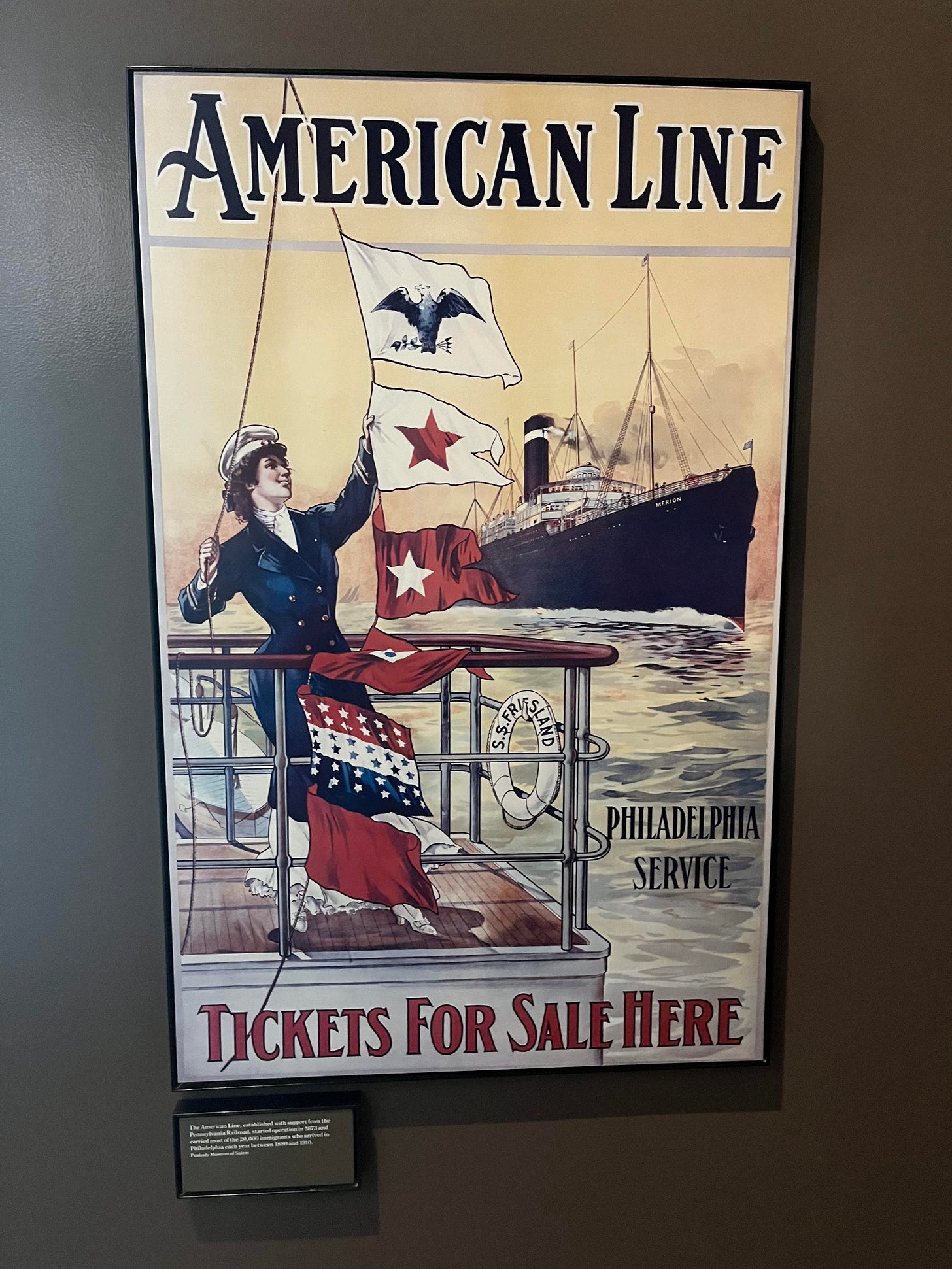

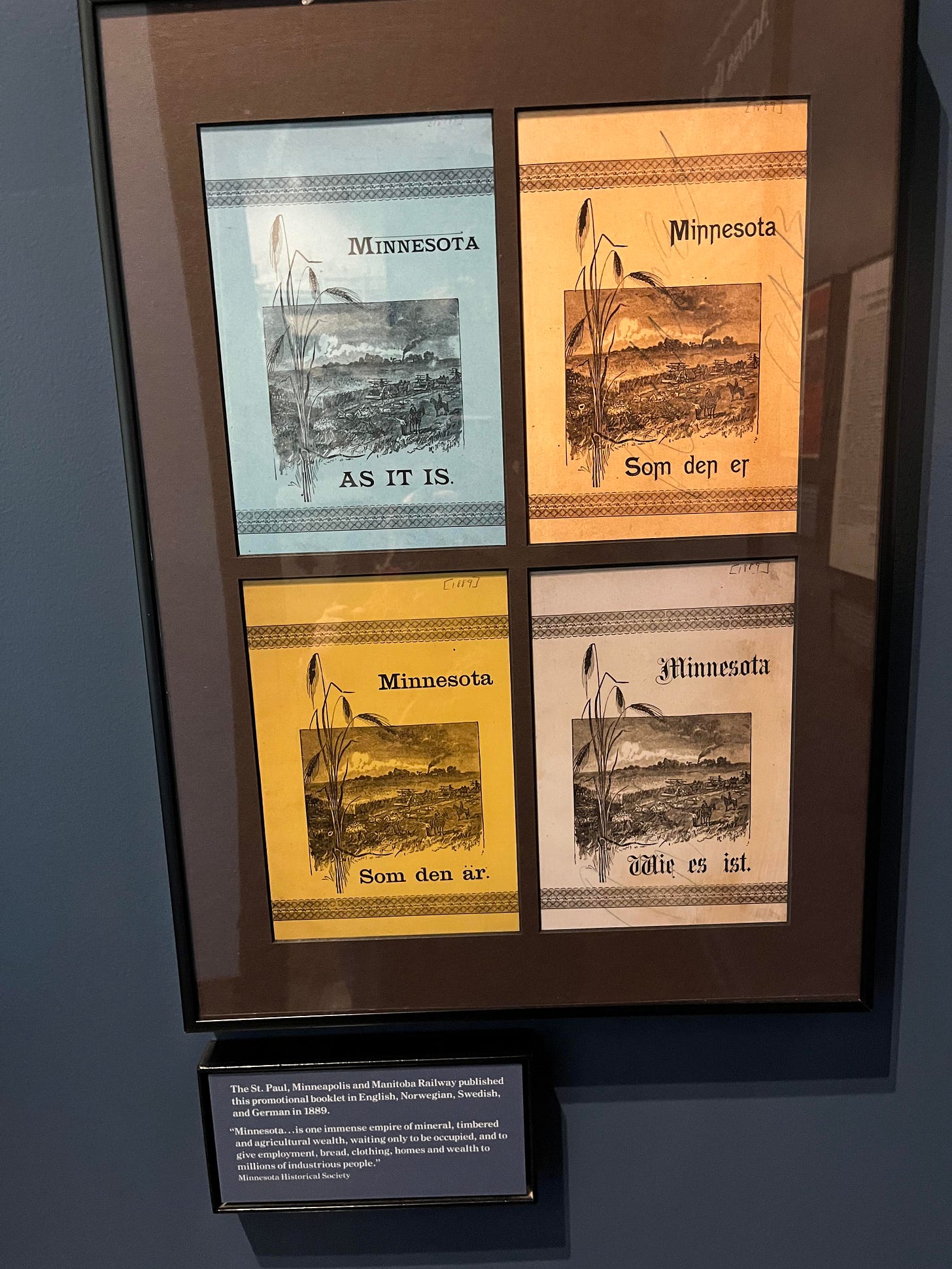
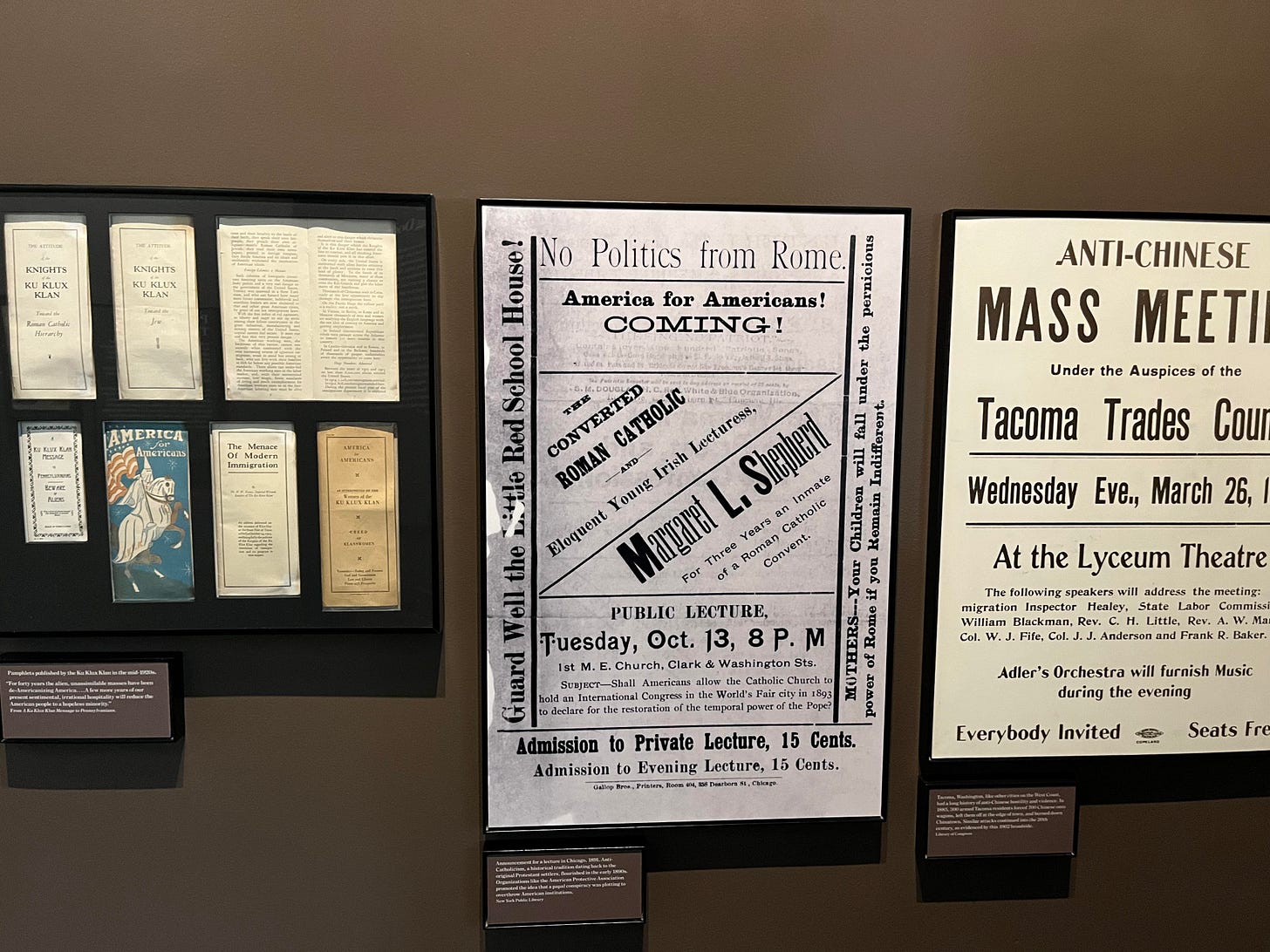

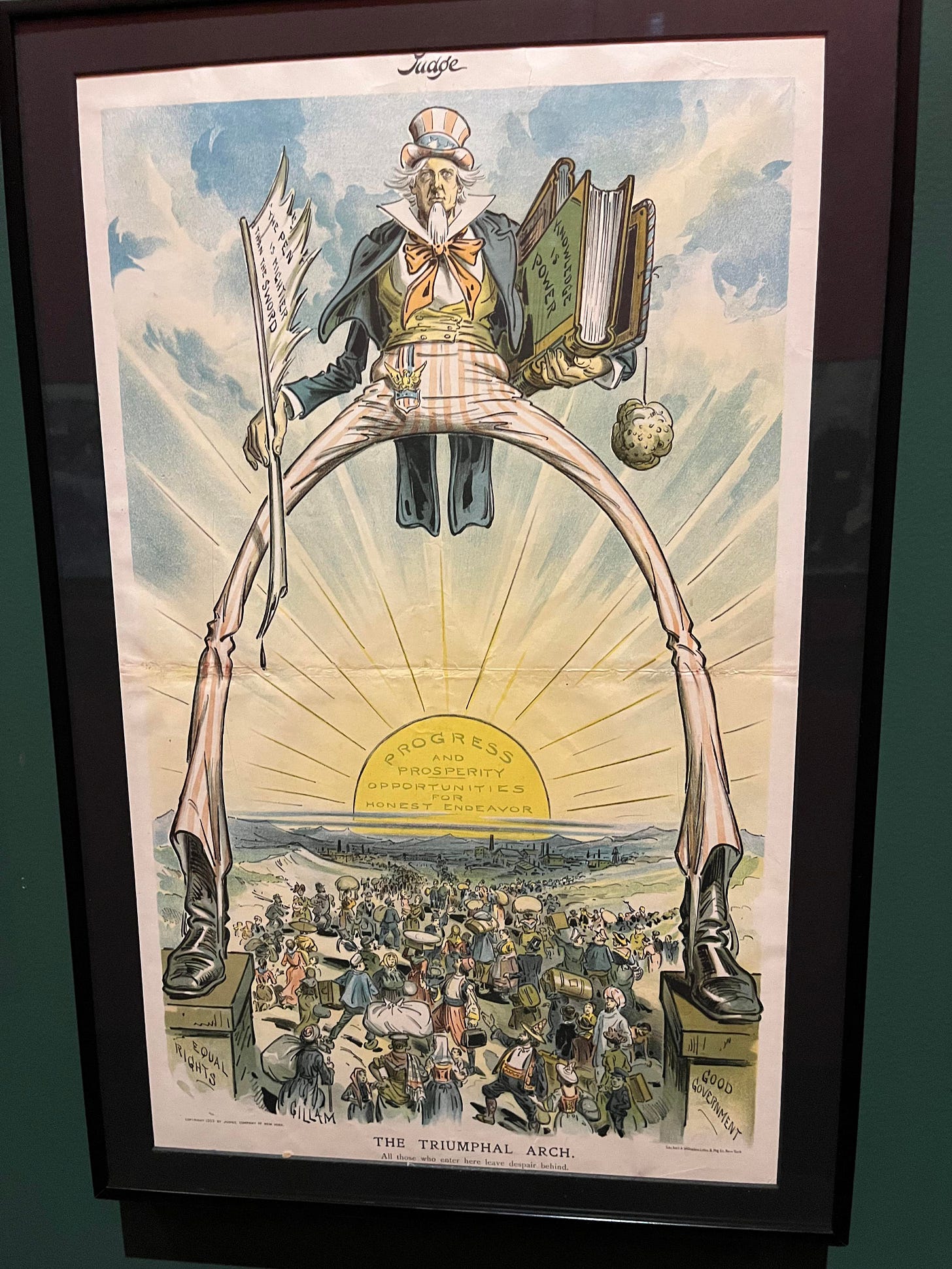
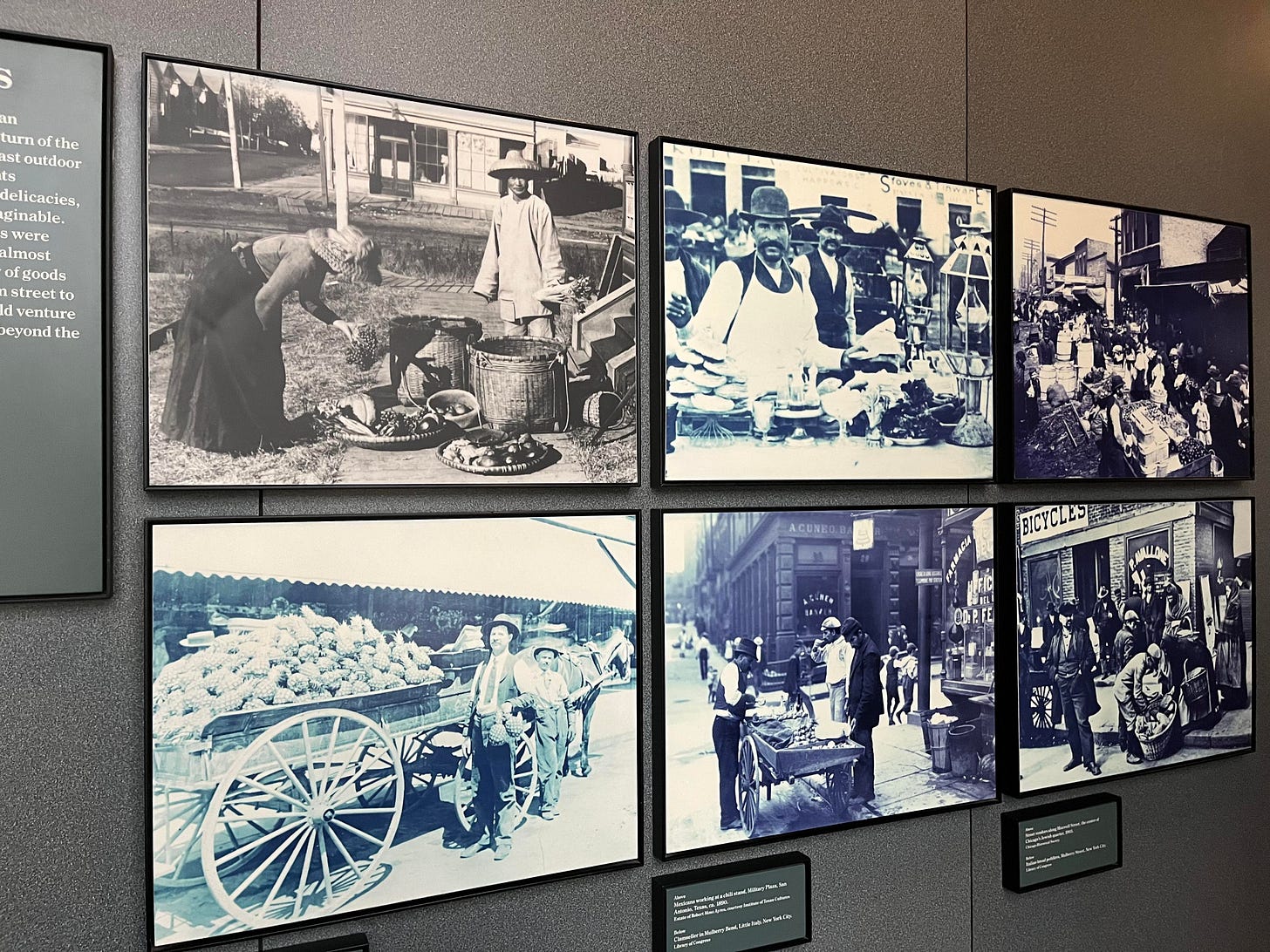
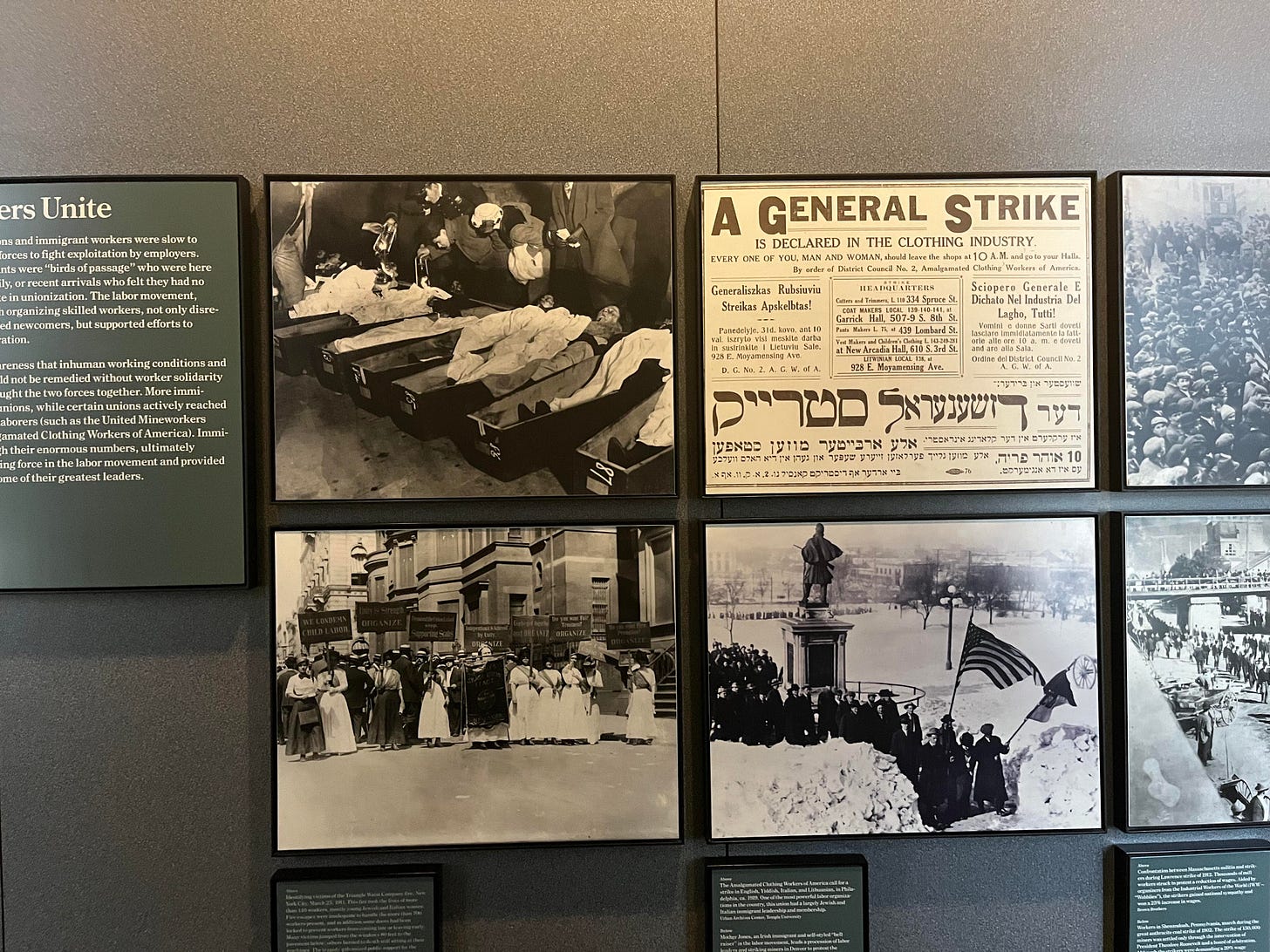
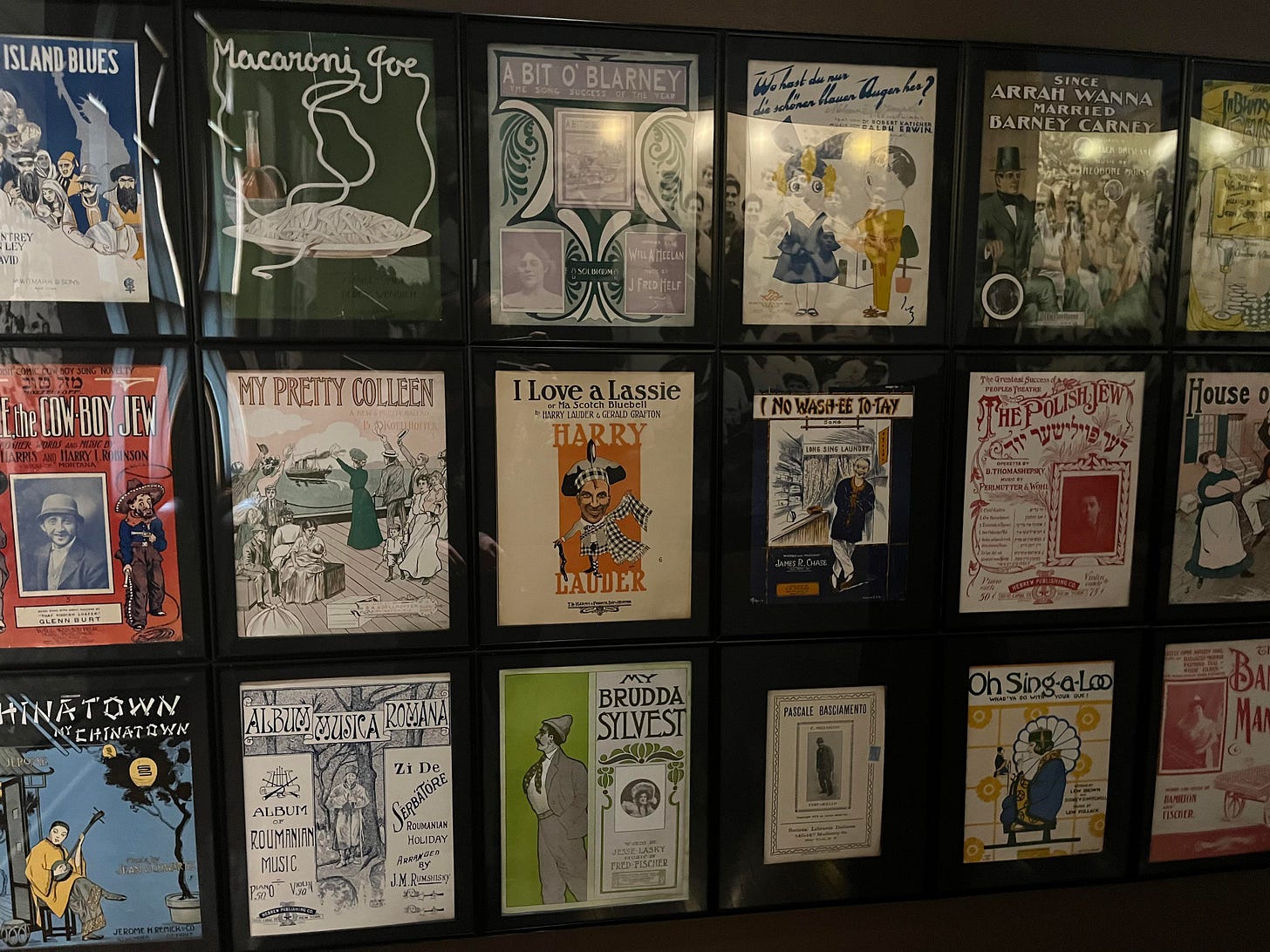

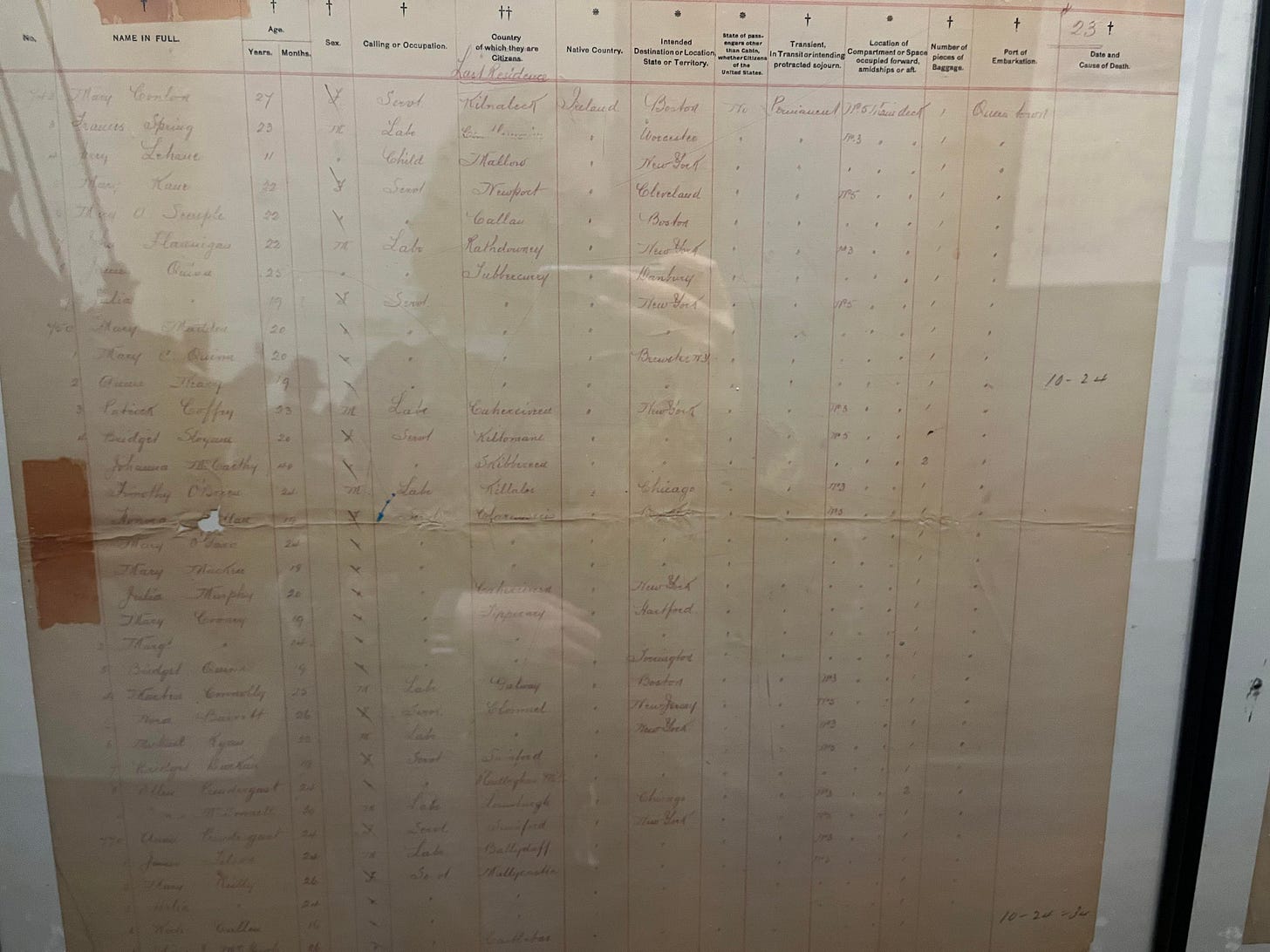

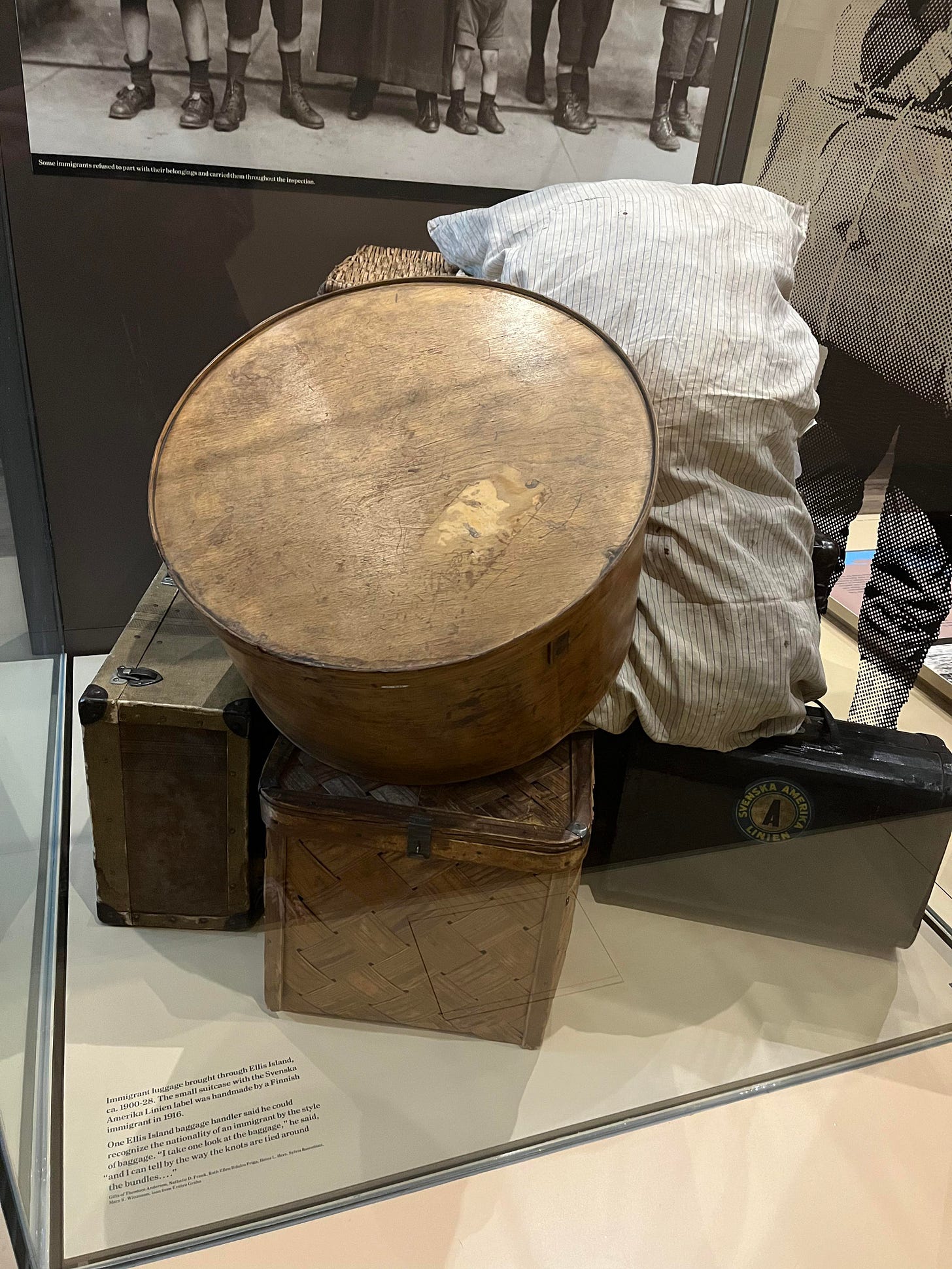
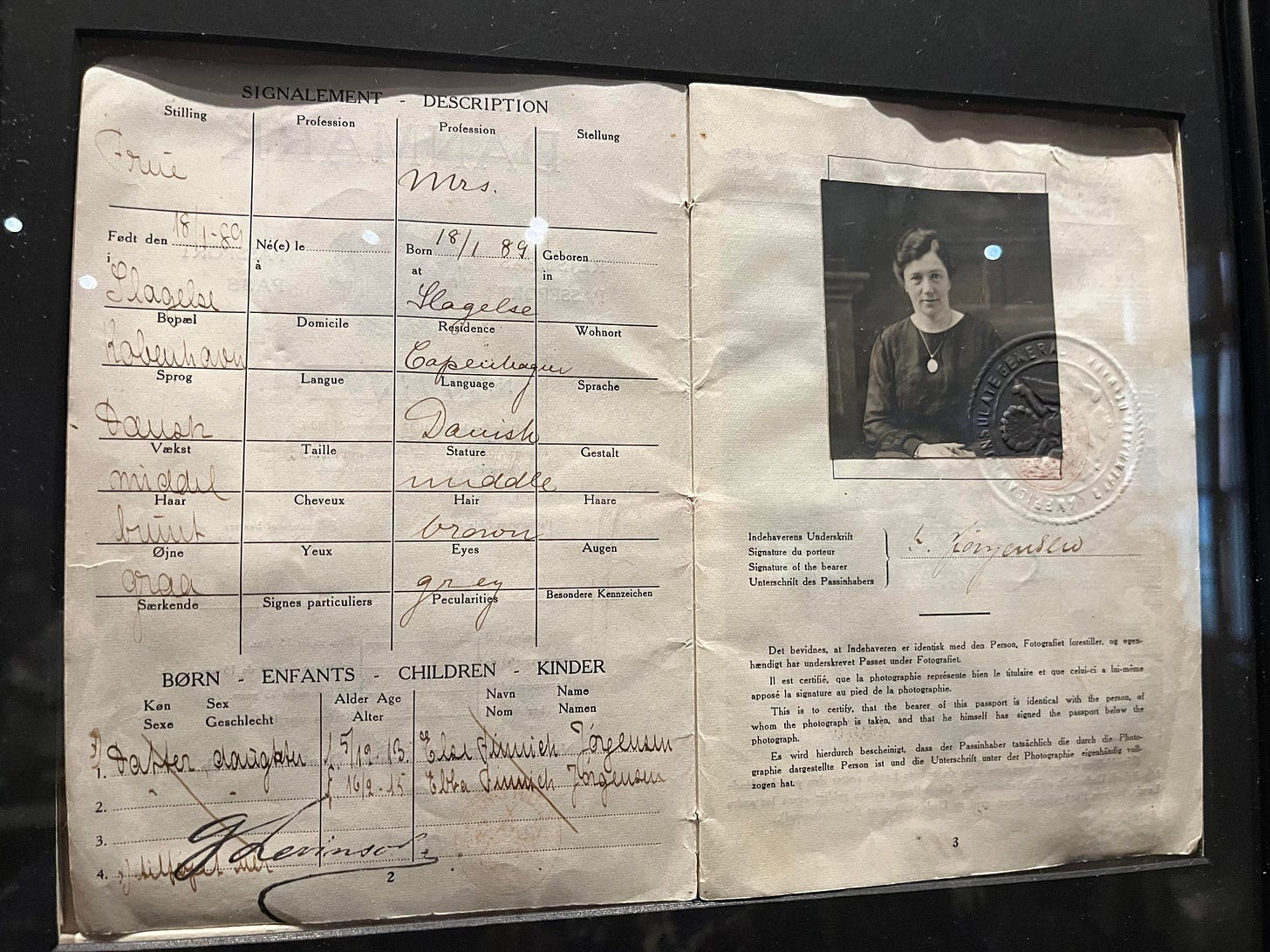

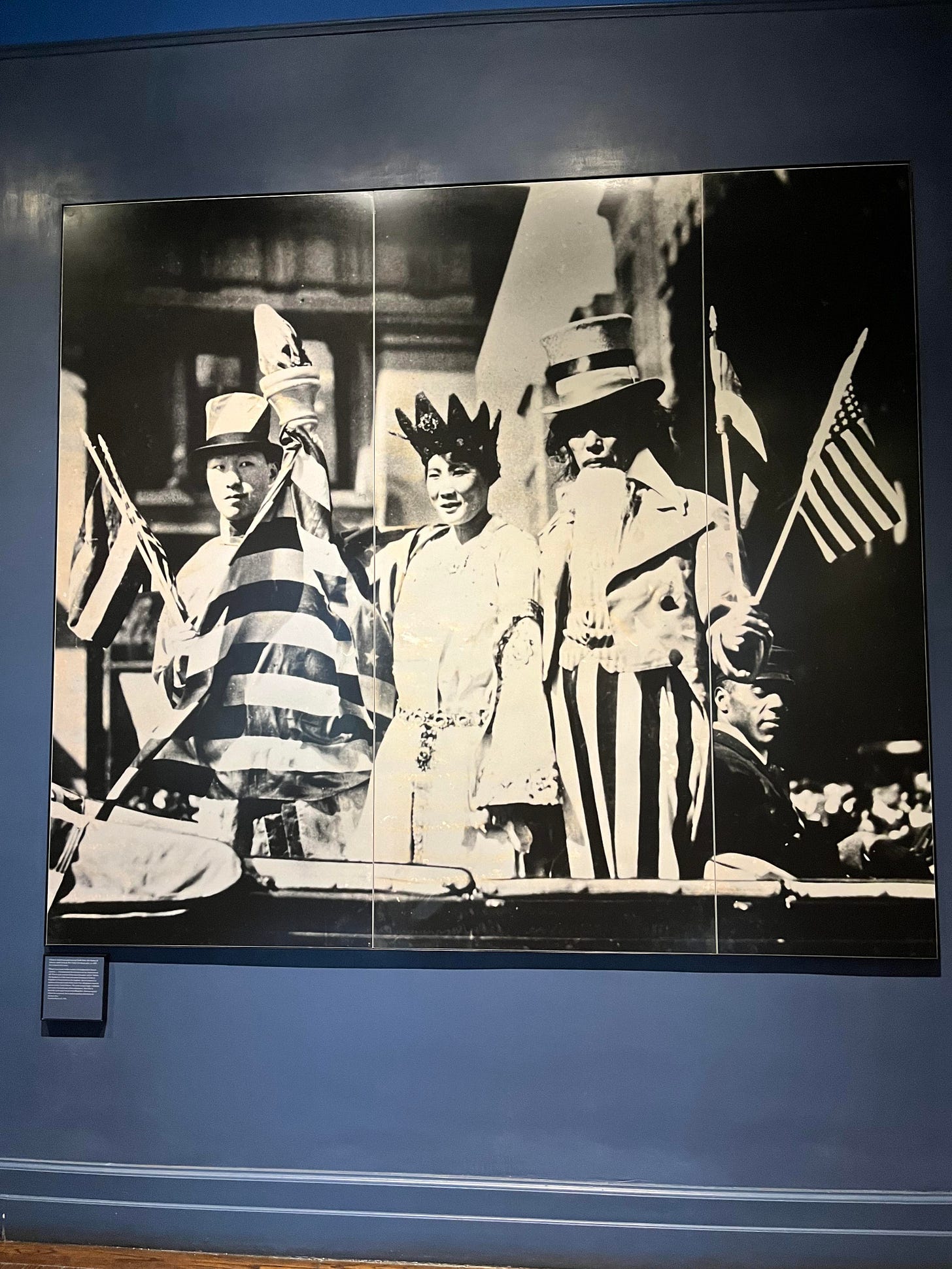
Cathy! This was a great newsletter! One of my favs in a long time! Really liked the pictures of the immigrants, the photography of their faces up close were stunning. Also, can't believe you were tortured by the Happy Birthday song, you are a braver woman than I for I fear I would have snapped. XOXO love you and loved the writing of this one :)
I don’t understand why everyone in the universe doesn’t read this blog. It is literally the best thing ever